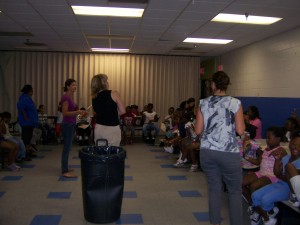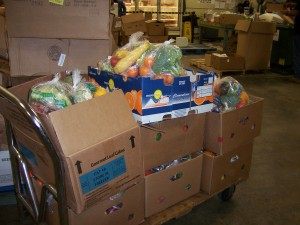Hi Everyone,
My practicum has been in progress for a while, but this is my first blog entry to share the activities I have been involved with. For my practicum, I wanted to gain more experience with nutrition related research. I started working with two professors at a large local university (University of South Florida). Both are involved in very different and interesting research projects.
My work with Dr. Lauri Wright initially involved work with a Feeding America/Kid’s Café project. The purpose of the project was to develop a nutrition education program to promote fruit and vegetable intake in children from food insecure households. Prior to my starting work with this project, Dr. Wright had already designed the intervention and received a generous grant from Feeding America to cover the expenses. The project was conducted through a Boys and Girls Club in the Sulphur Springs community (a lower-income area) of Tampa, Florida during summer of 2012.
Upon my getting involved with this project, I designed educational materials on the importance of eating more fruits and vegetables which where used in the education of both children and parents involved in this program. On multiple occasions during the project, I assisted in the creation and distribution of fresh produce gift bags (donated by Feeding America) to the children and families participating in the intervention. I also had the opportunity to help with classroom based educational program (primarily focused on increasing intake of fruits and vegetables). We taught the children about the importance of eating a “rainbow” of different fruits and vegetables, and provided them with a healthy snack (ladybugs on a log: celery with peanut butter and dried cranberries).
As part of the research experience I gained from this community intervention, I helped gather data on anthropometric measures and estimates of reported fruit and vegetable intake via survey of the participating children. I then entered the data for approximately 50 pre and post surveys collected during the program into an excel spreadsheet. In meetings with Dr. Wright, we have already noticed trends in the data collected (for example, %ile of BMI was overwhelmingly high, suggesting a high prevalence of overweight and obesity in the subject group). The official statistical analysis of the data is currently being conducted by the department statistician. I look forward to sharing the results during my practicum presentation. Overall, it has been great to be involved in all aspects of this project, and to gain some experience with real hands-on public health nutrition related research.
My other area of work has been with Dr. Uusitalo and the TEDDY study (The Environmental Determinants of Diabetes in the Young Study). This is a large epidemiological study that is focusing on exposures early in life (particularly infant feeding practices) and later onset of Type 1 Diabetes. I am extremely impressed with the depth of this epidemiological data. The data collection has been ongoing for approximately 4 years, and will continue for an additional 11 years. The subjects are in 4 different countries, with a total of 8 sites of data collection total (4 in the U.S., 3 in Europe). The database is extensive and includes a wealth of information on the socio-demographic and nutritional habits of a cohort of mothers and newborns. Dr. Uusitalo is the main project coordinator; together we brainstormed ideas for small data analysis that she would like us to look at together. In order to better understand the data, I have also done a review of current literature on health outcomes related to infant feeding practices (especially duration of breastfeeding). Additionally, I have helped Dr. Uusitalo with coding some of the “missing” items in food database that the project utilizes.
My work with this project has allowed me to better understand the world of epidemiological research, and has given me more practice working with statistical analysis. I am hoping that my work with this research during my practicum will provide the foundation to possibly complete an independent study that would involve coming up with a research hypothesis and using the TEDDY database to test the hypothesis.








